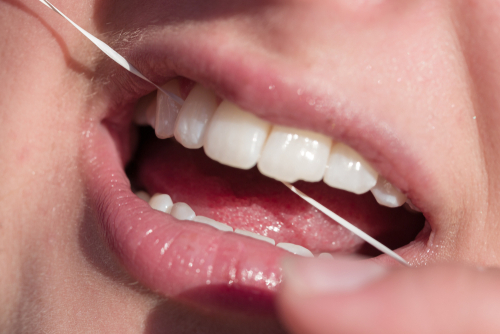
Flossing is one of the simplest yet most powerful habits for maintaining oral health. While brushing cleans the surfaces of your teeth, there are tight spaces between teeth and below the gumline, also between teeth and crowns, where your toothbrush can’t reach. Using a floss helps to reach and clean those areas but despite its importance, many people skip it or use an improper technique, reducing its effectiveness.
Why Flossing Matters
Plaque, a sticky film of bacteria, constantly forms on and between your teeth. If not removed, it hardens into tartar, which can only be removed by a dentist. Over time, this buildup can cause gum inflammation (gingivitis), which can progress to more serious gum disease (periodontitis), potentially leading to tooth loss. At Lavista Park Family Dentistry, we teach you the right way to floss and care for your teeth in the long run!
Daily flossing:
- Removes plaque and food particles from between teeth
- Helps prevent cavities and gum disease
- Contributes to fresher breath
- Promotes overall oral hygiene
How to Floss Your Teeth the Right Way
- Start with Enough Floss: Tear off about 18 inches of dental floss. Wrap the majority around your middle fingers, leaving a small segment—around 1 to 2 inches—for cleaning.
- Guide the Floss Between Teeth: Carefully insert the floss between two teeth, using a gentle back-and-forth motion. Don’t force it or snap it in, as this can injure your gums.
- Form a C Around the Tooth: Curve the floss around one side of a tooth in a “C” shape, and gently slide it just beneath the gumline. Glide it up and down to remove any plaque or debris.
- Repeat With Fresh Floss: Use a clean section of floss as you move from one tooth to the next, ensuring each tooth is thoroughly cleaned.
Take your time and be gentle to avoid injuring your gums.
Types of Floss Available
Different types of floss are available to suit various needs and preferences:
- Waxed Floss: Easier to slide between tight teeth; less likely to fray.
- Unwaxed Floss: Thinner and may provide a better clean but can break more easily.
- Dental Tape: Broader and flatter, ideal for people with wider gaps between teeth.
- PTFE Floss (Teflon): Glides easily and resists shredding, great for people with braces or tight contacts.
- Super Floss: Pre-cut strands with a stiff end, spongy middle, and regular floss end—ideal for braces, bridges, and wide gaps.
- Floss Picks: Handy and portable, though not as effective as traditional floss at reaching all angles.
Remember, flossing just once a day can make a big difference in your oral health. If traditional flossing is challenging, don’t give up—try different types or tools until you find what works best for you. Pair it with regular brushing and dental check-ups, and you’ll be on your way to a healthier smile that lasts a lifetime.
We are here to address your dental concerns and support your journey toward a healthier lifestyle.
Give us a call today at 770-939-5122 to book your appointment with Dr. JD Desai at Lavista Park Family Dentistry—your trusted local dentist proudly serving Tucker, Atlanta, North Druid Hills, and the Stone Mountain community.
